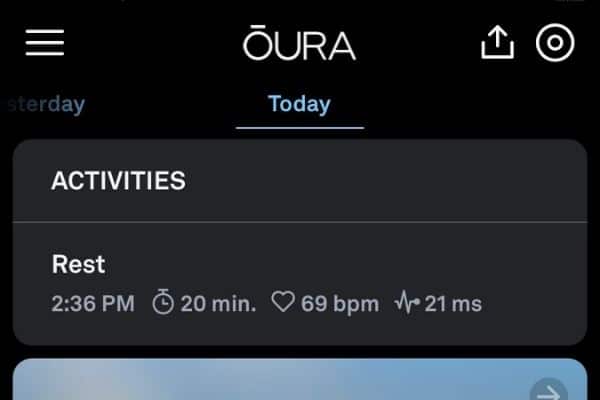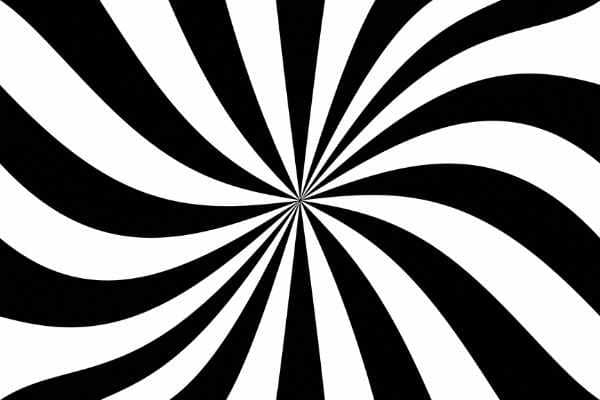Have you heard about Non-Sleep Deep Rest? It is a new term for a technique of resting your brain with a self-directed state of calm achieved through mental focus. NSDR increases your ability to learn, reduce stress, feel calm and fall asleep faster.
What is Non Sleep Deep Rest (NSDR)?
Non-Sleep Deep Rest (NSDR) is a term coined by Dr. Andrew Huberman, a neurobiologist at the Stanford School of Medicine and Huberman Lab podcaster.
NSDR describes certain self-directed states of calm achieved through mental focus that are scientifically proven to recharge your brain.
NSDR is not as well known as meditation, but can be easier to follow, and is particularly helpful for falling asleep. The two main NSDR protocols are Yoga Nidra and self-hypnosis.
NSDR protocols can improve learning, help you relax, reduce stress, and also fall asleep more easily.
Who uses Non-Sleep Deep Rest? Google CEO Sundar Pichai!
Google CEO Sundar Pichai recently shared that he is also a devotee of Non-Sleep Deep Rest. While he finds it difficult to meditate, he can follow a yoga nidra NSDR protocol for 10 or 20 minutes.
He learned about NSDR Protocols on ‘The Huberman Lab’ podcast. Dr. Huberman discusses that he also takes an afternoon NSDR break, doing either yoga nidra or self-directed meditation as a brain refresher.

Let’s look at the benefits of NSDR.
Non-Sleep Deep Rest Calms Your Body
The calming effect of Non-Sleep Deep Rest is clear from the research.
Non-Sleep Deep Rest protocols teach us to control the mind through the body.
This gives us control over stress and anxiety, leading to relaxation.

You cannot control thinking with thinking. The way to control and calm the mind is through the body. (NSDR protocols involve an increased awareness of your body.)
This makes sense, but as with all things, there is knowing, and then there is experiencing. And I have found that doing NSDR protocols do help me feel my body better. And I am calmer after a Non-Sleep Deep Rest protocol.
But I was fascinated to discover that my Oura ring can tell when I am in a Non-Sleep Deep Rest protocol.
A period of ‘Rest’ will show up on my daily Oura dashboard, as shown below.

I didn’t tell the ring that I had done NSDR, it just knew it! The Oura ring detected changes in my resting heart rate through changes in my finger’s arterial blood pulse volume.
I like this proof that I was truly able to change my body state while in NSDR. This has helped me to make Non-Sleep Deep Rest protocols a daily(ish) habit.
NSDR Helps You Fall Asleep
The most important thing you can do to improve your learning and cognitive function is to get good sleep. Seriously.
And this is really being overlooked.
People are spending time and energy trying to figure out which supplement or nootropic is the best to take (Dr. Huberman has a recommended sleep cocktail). But really the first step is to make sure you are getting quality sleep.

A big problem in getting quality sleep is the falling asleep, either first thing, or later in the night if you wake up. This type of insomnia can be a real issue for people for ADHD or VAST (Variable Attention Simulus Trait).
It is the transition from wakefulness to sleep that is the issue.
Dr. Huberman describes the transition to sleep this way:
‘The transition to sleep involves allowing our thoughts to become fragmented, and then we become relaxed, and then the brain enters the state where space and time are very fluid and not under our conscious control‘.
Dr. Andrew Huberman on the Tim Ferris Podcast
To transition from alertness to sleep we need to un-focus our mind and thoughts. To flip a switch off so we can fall asleep.
And this is where Non-Sleep Deep Rest protocols come in.

By practicing NSDR protocols, you are training your mind to enter states of deep rest. This helps you turn off your thoughts when you need to so you can get to sleep.
Non-Sleep Deep Rest Helps You Learn Faster
It is already known that we need a period of sleep to consolidate learning.
This is because while we need high focus for the brain to learn a skill, we need another state to hold the learning in.
The actual rewiring of the brain happens during the deep rest of sleep or NSDR. This rewiring is needed to turn that new skill into knowledge.

Non-Sleep Deep Rest protocols may be even better for this than regular sleep, helping you learn much faster, and retain the new information much longer.
Neuroplasticity during a period of intensely focused skill learning can be improved by about 50% when it is followed 20-minute Non-Sleep Deep Rest protocol.
Non-Sleep Deep Rest Increases Creativity
Dr. Huberman explains why including Non Sleep Deep Rest protocols into your day should help to increase your creativity.

Our brains are better at linear implementation when we are alert. This means organizing and implementing strategies for pursuing our goals.
Obviously this is a great thing, organizing and implementing steps in a linear fashion achieve our goals is absolutely necessary.
But what about coming up with novel ideas, a new goal or way to solve a problem that had not occurred to us before? This is creativity, another important aspect of the human mind.
When we are relaxed, our brains can more easily form novel thought processes. So, the state following a non sleep deep rest protocol should enhance creative thinking.

This is when those Eureka! moments occur!
So if you are working on a problem it might seem like a good idea to just keep slogging away in implementation mode. This is the wrong approach. (And a classic problem for people prone to hyperfixation)

A better idea? Stop and give your brain a rest.
Non Sleep Deep Rest helps your brain become more creative, you might just come up with a new way to approach your problem. And that could actually save you time.

Non-Sleep Deep Rest Options (Huberman Lab Favourites!)
Ok, enough will all the benefits! What are the options for Non-Sleep Deep Rest?

I’ll discuss three options:
- Hypnosis
- Yoga Nidra
- A Short Shallow Nap
Non-Sleep Deep Rest Option: Hypnosis
First of all, hypnosis is probably not what you are thinking of if you are imagining a stage hypnosis show.

Hypnosis is a special form of high focus and is a powerful therapeutic tool. Normally a state of high focus is linked to excitement or caused by a high level of stress.
But hypnosis is unique as it is a state of high focus with relaxation.
Remember that learning is best when intense focus is followed by deep rest for consolidation of the learning?
Well, with hypnosis a state of intense focus and deep rest occur at the same time!
Which means that hypnosis is a very effective tool for improving neuroplasticity.

Read more about hypnosis as a Non-Sleep Deep Rest Protocol and my experience using the Reveri app for self-hypnosis.

Non-Sleep Deep Rest Option: Yoga Nidra
Another great and easy NSDR option is Yoga Nidra.
Yoga Nidra means Yoga Sleep, it is done lying down and does not involve movement.

If you a following a guided Yoga Nidra meditation, you will first be guided with some deep breathing, and then on to a guided body scan, focussing on different body parts in turn.
Often Yoga Nidra meditations are about 20 minutes in length and are extremely relaxing. Yoga Nidra as a bedtime ritual is very effective at calming the mind and body to help you get to sleep.
I discuss Yoga Nidra protocols in more detail here.
Non-Sleep Deep Rest Option: Short Nap
The easiest option, which you have probably already know how to do, is a short nap!

For it to be Non-Sleep Deep Rest, we are talking about a short nap. About 20 minutes in length.
A short nap after learning has been scientifically proven to help with ‘wakeful memory consolidation’ which may be better than ‘overnight consolidation’ with deeper sleep.
And you can pretty much do it anywhere, anytime. Easy!
Non-Sleep Deep Rest: Review
Non-Sleep Deep Rest protocols are easy techniques that help you rest your brain.
Non-Sleep Deep Rest protocols take just 10-20 minutes and options include self-hypnosis, Yoga Nidra or even a short nap!
They have been scientifically proven to increase your ability to learn, reduce stress, feel calm and fall asleep easier.

Who knew that taking a break would actually make your learning more efficient and help your physical and mental health?
Ok, it does make sense….
Read on for the best free Non-Sleep Deep Rest protocols with links to Youtube videos and a free app.
Want to learn more about another calming technique? Read about the benefits of physiological sighs.
Use the code VASTMIND to get 15% off your Momentous order
Consult your Physician or Registered Dietitian before starting nutrition supplements.
Non-Sleep Deep Rest References
- Training attention for conscious non-REM sleep: The yogic practice of yoga-nidrā and its implications for neuroscience research
- Huberman Lab Podcast #8: OPTIMIZE YOUR LEARNING & CREATIVITY WITH SCIENCE-BASED TOOLS
- The Tim Ferriss Show: Dr. Andrew Huberman — A Neurobiologist on Optimizing Sleep, Performance, and Testosterone (#521)
- Replay of Learned Neural Firing Sequences during Rest in Human Motor Cortex
- Consolidation of human skill linked to waking hippocampo-neocortical replay
- Physiological Sighs: Benefits of the Huberman Lab Tested Breathing Technique
- The Huberman Sleep Cocktail: The Simple Mix That Beats Insomnia
- Dr. Andrew Huberman’s Recommended Testosterone Supplements
- Dr Andrew Huberman Book Recommendations: Top Picks
- Huberman Lab Supplement: Is Athletic Greens Worth It?
